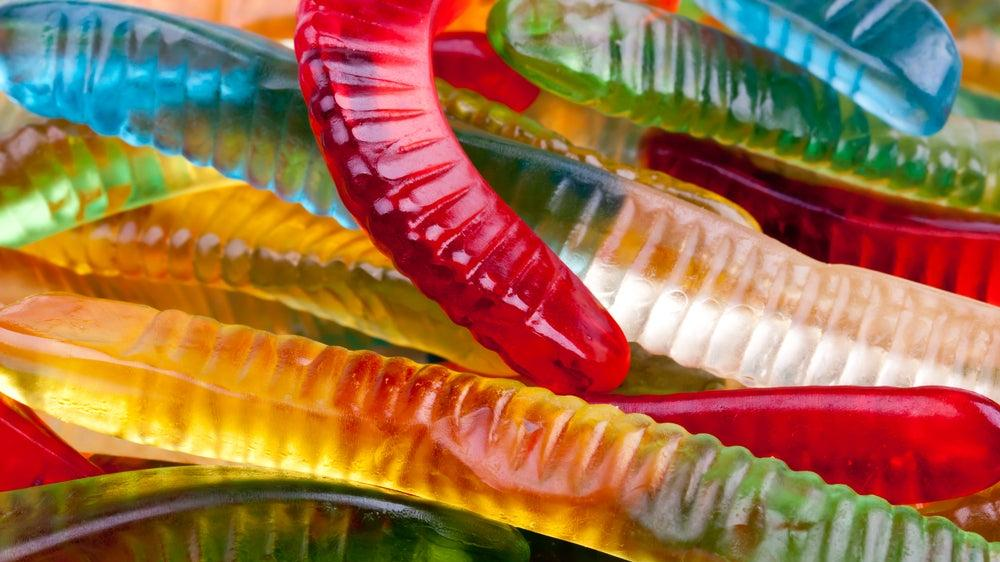Gummy Worms Are Newer Than You Think
The classic candy has only been in America for a relatively short time.
If you're looking to uncover a wealth of fun facts about your favorite foods (and don't like logging into Twitter for that content), look no further than Snack Stack, a Substack newsletter by food writer Doug Mack detailing the curious histories of grocery aisle staples and edible ephemera alike. Mack's narrative style is engrossing and the candy and snacks he discusses come with surprisingly rich backstories. Case in point: I'd never thought much about the provenance of gummy worms, and I'm shocked to find out how young they really are.
Indeed, all "gummies" as we now know them are a recent phenomenon, entering the United States only within the past 40 years. Mack explains that, while we had chewy and fruity candies like jelly beans and Swedish Fish well before the 1980s, these items "are not the same as gummies, which have a slightly different, less sticky, more biteable texture."
It was only in 1981 that Haribo Goldbears, a product that had gained traction in Germany throughout much of the 20th century, debuted on the American market. Their arrival increased the national appetite for springy, gummy candy, an appetite that had already been growing as the product trickled into the U.S. in the prior years via members of the military and, says Bon Appetit, "German-language teachers in U.S. high schools dispensing gummy bears in classrooms so their students could sample foreign cuisines." It all sounds like the mythical status we afford Japanese Kit Kat flavors today.
That same year, Snack Stack explains, Trolli brought its products to North America from Germany as well, and Gummi Squiggles—the squiggles being, essentially, worms—heightened our budding romance with the candy. More animal shapes soon followed. but there's just something about worms that hooked us.
"What gummi worms offered to American consumers of the 1980s was not whimsy but delight by way of low-risk disgust," Mack writes. "While gummi worms quickly became a mundane staple of candy aisles around the USA... they began life as a true novelty, with a transgressive appeal that was absolutely a key selling point."
It certainly makes sense that the same generation that skyrocketed Garbage Pail Kids to fame would enjoy biting the heads off slimy, slithery candy bugs. The only thing that's hard to pin down is why Trolli would have taken such a hard turn from the conventional bear shape and gone straight to something that lives in the mud. Snack Stack has some guesses:
While I'm still not certain, here's my best guess: Trolli simply wanted to offer something clearly different from bears and they viewed American consumers as especially open to products that felt 'weird' but weren't actually abnormal in terms of flavors or ingredients. Americans love few things more than an illusion of adventure and boldness (see also pre-dirtied jeans and fake log cabins and covered-wagon trips for tourists).
And that's what I love about reading Snack Stack: If we want to learn about our favorite foods, we have no choice but to uncover the unvarnished truth of who we are. As kids, we crave novelty and comfort in equal measure, and as adults, very little has changed. I love gummy candy in all its forms—peach rings, Sour Patch Kids, the occasional Trolli Octopus—but nothing hits quite like a worm.
How lucky I am to have lived fully within the decades when gummy candy has been abundant here in the United States. It's wild to think my parents, who were full-grown adults by 1981, might have never even tasted one before.
